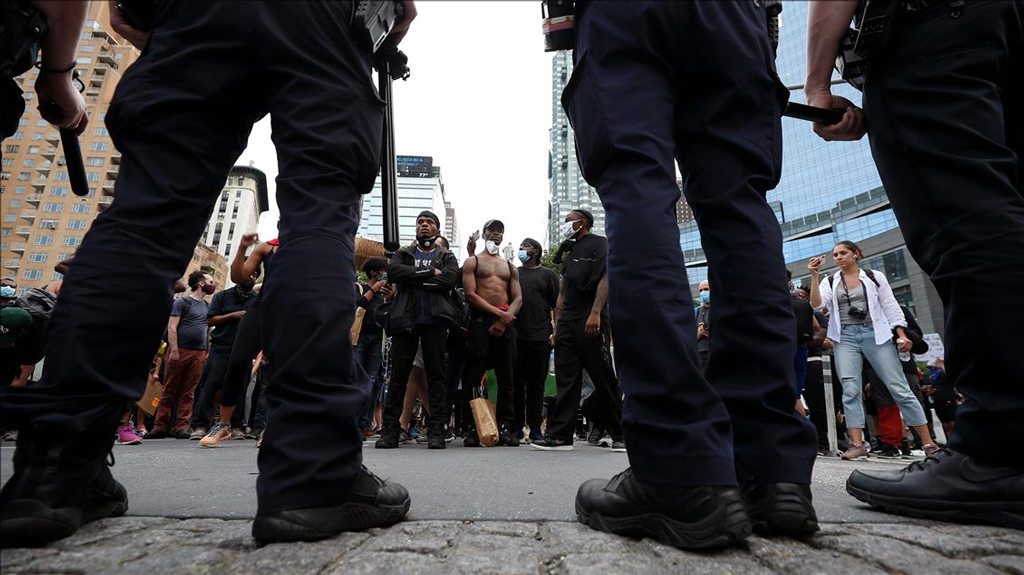Almost 10 years ago a series of books and articles were written discussing the decline of the United States and what can happen after its fall from superpower status. The financial meltdown of 2008 together with the unending wars of Iraq and Afghanistan made many believe that the U.S. would not be able to come back from such major challenges.
There were also a number of domestic problems at home waiting to be resolved, including education, infrastructure and social problems that arose in broken cities across the U.S.
In the last 10 years, the U.S. achieved a recovery in its economy. In fact, as of January 2020, the unemployment rate was one of the best in years in the country. By then the U.S. also achieved some progress in the never-ending wars. In December 2011, the U.S. withdrew from Iraq.
Although it returned after the rise of Daesh, the amount that was spent on the counterterrorism effort was not comparable with the amount that was spent during the invasion of Iraq and the insurgency that rose afterward.
In the meantime, the U.S. also took some steps to withdraw its forces from Afghanistan. By taking these steps the U.S. seemed to fix some of its mistakes and resolve some of its problems. The decline of the U.S. debate started to be replaced by the Great Power Rivalry discussions.
Ten years ago many people were talking about a post-America world, and they were assessing who would replace the U.S. as a major superpower and what would be the structure of the international system. As of January 2020, the debate shifted to trade wars between the U.S. and China and what could this new era of power rivalry bring to the international system. Many of the analysts were convinced that the U.S. will not disappear from the great power league that easily. The U.S. turned out to be more resilient and more powerful than the expectations of many.
However 10 years later, after the “American decline” discussions, today several developments reincarnated those debates again.
First of all, 10 years ago analysts pointed out some critical domestic issues that need to be dealt with. The necessity to put its house in order was one of the most frequently stated mottos for some members of the former Barack Obama administration.
There is no clear indicator of how much work has been done to put the house in order. Secondly, two major crises that the U.S. experienced in the last three months demonstrated that there are so many things to be done in the country in regard to the health, safety and well-being of U.S. citizens.
During the COVID-19 crisis, the U.S. faced multiple different crises at the same time. One of the challenges was about managing these forms of crises. The inability of the federal government and states to prepare for such a major pandemic in part made the U.S. the epicenter of the crisis around the world.
For months the U.S. president and the governor of New York debated about the availability of personal protection equipment (PPE) for the doctors and medical professionals. A second crisis was about the health care sector. For almost 10 years, the U.S. has debated on universal health insurance, and still an agreement has not been reached between the two political parties.
Thirdly, the economic aftershock of the COVID-19 crisis turned out to be shocking for everybody. In less than three months more than 44 million people in the U.S. applied for unemployment benefits. The unemployment rates soared. Considering the gradual opening of the cities across the country, it will take a long time to recover from this unemployment rate. It will be critical to see and prepare potential social and political aftershocks of these unemployment rates.
The killing of George Floyd and the demonstrations and events taking place in its aftermath demonstrated another domestic challenge that the U.S. needs to face. The racial divide in the U.S. exhibited itself even before the killing of Floyd during the COVID-19 crisis.
Although African Americans constitute 13% of the population, they up more than 25% of all COVID-19 deaths. Some analysts raised this issue and called the authorities to figure out the social and economic root causes of this discrepancy.
Since the killing of Floyd, this issue has occupied the top of the agenda in the U.S. Especially the demonstrations in Washington, D.C., and the disputes between President Donald Trump and mayors of the cities and governors of the states showed how divided the country can become.
All of these domestic challenges demonstrated that 10 years ago after much debates on American decline, the U.S. succeeded to make a comeback from its financial meltdown and take steps to end the ongoing wars; however, the domestic problems were not resolved and most of the issues were just swept under the rug.
In a three-month period, the U.S. faced all of these challenges at the same time and exposed all of its domestic vulnerabilities to the world. The U.S. decline debate may now start from where it left off 10 years ago. This time it should focus on putting the house in order.
[Daily Sabah, 13 June 2020]



